Kawasaki BJ 250 Estrella [1998-2000]: A Timeless Classic for the Discerning Rider
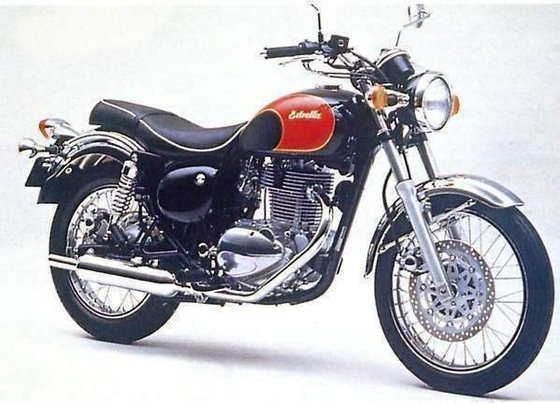
Introduction
The Kawasaki BJ 250 Estrella (1998-2000) is a motorcycle that defies the passage of time. Designed as a homage to the simplicity and elegance of 1970s UJMs (Universal Japanese Motorcycles), this air-cooled single-cylinder machine offers a riding experience that feels refreshingly analog in an increasingly digital world. While its specs sheet might not set modern forums ablaze, the Estrella’s charm lies in its ability to deliver pure, unadulterated motorcycling joy. Having spent time with this underrated classic, I can confirm it’s a bike that makes you rediscover why you fell in love with two wheels in the first place.
Design & Ergonomics: Retro Done Right
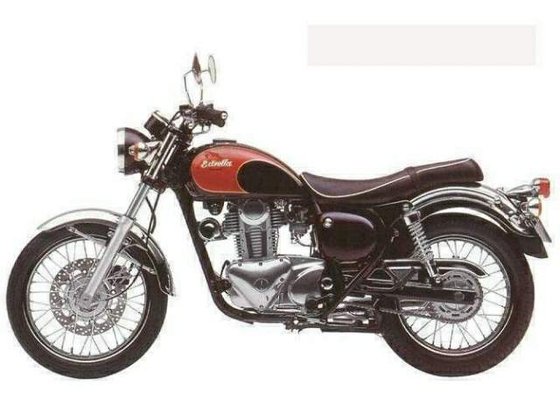
Kawasaki’s designers nailed the vintage aesthetic without resorting to pastiche. The teardrop fuel tank (holding 14L/3.7 US gal) flows into a bench seat adjustable between 745-775mm (29.3-30.5"), making it accessible for riders from 160cm (5’3”) to 185cm (6’1”). The chrome-accented exhaust, spoked wheels (18" front, 17" rear), and minimalist bodywork create a silhouette that wouldn’t look out of place in a 1975 Kawasaki catalog.
The cockpit is delightfully basic - an analog speedometer with inset warning lights, no tachometer (you’ll learn to ride by ear), and switches that click with satisfying positivity. At 159kg (350.5 lbs) wet, it’s manageable in traffic yet stable at its 121km/h (75mph) top speed. The neutral riding position - slight forward lean to the wide handlebar, knees bent at 90° - works for both city commutes and weekend backroad explorations.
Engine Performance: Character Over Brutality
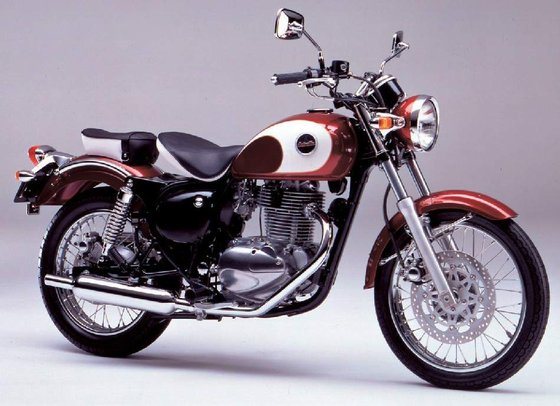
The 249cc SOHC air-cooled single (66x73mm bore/stroke) is a study in mechanical empathy. With 17-20 HP (depending on market) peaking at 6,500-7,500 RPM and 21 Nm (15.5 lb-ft) of torque arriving at 5,000 RPM, it’s no canyon-carver. But what it lacks in fury, it makes up in personality.
Cold starts are drama-free thanks to the electric starter (a blessing given the 9.0:1 compression ratio). Thumb the 5-speed gearbox into first, and you’re greeted with smooth take-up from the wet multi-plate clutch. Below 4,000 RPM (≈65km/h/40mph in top gear), it’s all tractor-like lugging ability - perfect for urban grind. Crack the throttle open past halfway, and the CDI ignition lets the single breathe freely, pulling cleanly to its 8,500 RPM redline with a muted thrum that’s more tenor hum than scream.
Fuel economy is where this mill shines. Kawasaki claimed 3.0L/100km (78.4 mpg), but real-world riding typically sees 3.3-3.5L/100km (71-67 mpg). That’s 380-400km (236-248 miles) from the 14L tank - enough for a week of commuting or a leisurely Sunday ride.
Handling & Ride Quality: Predictable Poise
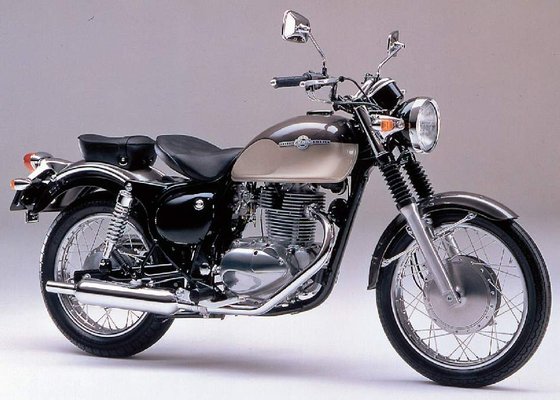
The Estrella’s chassis is a diamond frame with 1,400mm (55.1") wheelbase - long enough for stability, short enough for agility. Suspension is period-appropriate but well-sorted:
- Front: Telescopic forks with 120mm (4.7") travel - plush over broken pavement yet resistant to dive under braking
- Rear: Dual shocks with 75mm (3.0") travel and 5-way preload adjustment - firm when riding solo, compliant with a passenger
Bridgestone Trail Wing tires (90/90-18 front, 110/90-17 rear) offer surprising grip, though they’ll protest if you push too hard into corners. The braking system - 300mm front disc with a 2-piston caliper and 230mm rear drum - lacks ABS but provides progressive stopping power. It’s a system that rewards skilled modulation, much like vintage sportscars reward heel-toe downshifts.
Competition: Standing Out in the 250cc Class
The late-’90s 250cc market was split between sporty quarter-liter bikes and utilitarian commuters. The Estrella carved its niche somewhere in between:
- Honda Rebel 250 (1997-2000)
- Similar power (20 HP) but cruiser ergonomics
- Lower seat (680mm/26.8") but more cramped for tall riders
-
Chain final drive vs. Rebel’s shaft - higher maintenance but better feel
-
Yamaha SR400 (1998)
- Kickstart-only vs. Estrella’s electric starter
- 23 HP but heavier (179kg/395 lbs)
-
More authentic retro vibe but less practical
-
Suzuki GrassTracker 250 (1999)
- Dual-sport design with 19” front wheel
- Same power but taller seat (810mm/31.9")
- Better for rough roads but less stylish
The Estrella’s ace card was its Japanese domestic market (JDM) heritage. While European rivals like the MZ RT 125 felt agricultural, the Kawasaki had a level of fit-and-finish that justified its slight price premium.
Maintenance: Keeping the Classic Alive
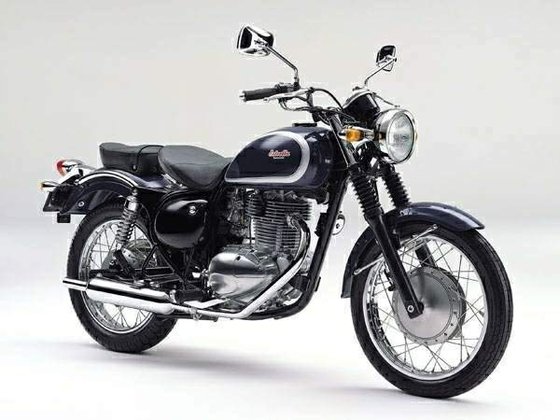
As a MOTOPARTS.store journalist, I’d be remiss not to address ownership costs. The Estrella’s air-cooled engine and carbureted fueling make it DIY-friendly. Key maintenance aspects:
- Valve Adjustments
- Every 6,000 km (3,728 miles)
- Requires 0.10-0.15mm (0.004-0.006") clearance on both intake/exhaust
-
Shim-over-bucket system - easier than Ducati’s desmo but trickier than Honda’s screw adjusters
-
Carburetor Tuning
- Mikuni VM26SS stock jetting tends to run lean in cold climates
-
Recommended upgrade: MOTOPARTS.store’s Jet Kit #MK-VM26-EST (includes main jet, pilot jet, needle)
-
Chain Care
- DID 520VX2 chain lasts ≈15,000 km (9,320 miles) with proper lubrication
-
Use MOTOPARTS.store’s Chain Maintenance Bundle (cleaner, lube, brush) monthly
-
Brake Upgrades
-
Swap stock organic pads for MOTOPARTS.store’s Sintered Metal Pads #SM-KW300 - 30% better bite
-
Electronics
- CDI units rarely fail, but keep MOTOPARTS.store’s Voltage Regulator #VR-EST98 as a spare
Common issues to watch:
- Exhaust header rust (apply high-temp paint annually)
- Clutch cable fraying (lube monthly, replace every 2 years)
- Petcock vacuum leaks (upgrade to manual petcock #MP-KW98)
Conclusion: Why the Estrella Still Matters
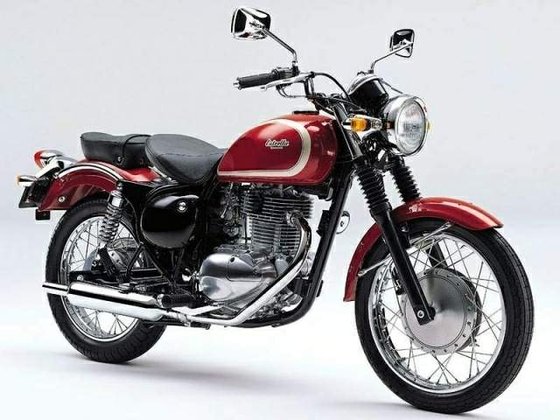
In an era where motorcycles increasingly feel like two-wheeled computers, the Kawasaki BJ 250 Estrella remains gloriously, unapologetically mechanical. It’s a bike that asks nothing more than fresh oil and a willing rider. Whether you’re a new rider building confidence or a seasoned motorcyclist seeking simplicity, this Kawasaki delivers smiles per gallon that no spec sheet can quantify.
And when the time comes to refresh your Estrella - whether with performance parts or OEM-style components - remember that MOTOPARTS.store carries over 5 million items to keep your classic running like new. From period-correct mirrors to modern suspension upgrades, we’ve got your two-wheeled time machine covered.
Specifications sheet
| Engine | |
|---|---|
| Stroke: | Four-stroke |
| Ignition: | CDI |
| Max power: | 15 kW | 20.0 hp |
| Max torque: | 21 Nm |
| Fuel system: | Carburetor |
| Lubrication: | Wet sump |
| Max power @: | 6000 rpm |
| Displacement: | 249 ccm |
| Max torque @: | 5000 rpm |
| Configuration: | Single |
| Cooling system: | Air |
| Compression ratio: | 9.0:1 |
| Number of cylinders: | 1 |
| Valves per cylinder: | 2 |
| Dimensions | |
|---|---|
| Wheelbase: | 1400 mm (55.1 in) |
| Dry weight: | 142 |
| Wet weight: | 156 |
| Seat height: | 745–775 mm (29.3–30.5 in) adjustable |
| Overall width: | 780 mm (30.7 in) |
| Overall height: | 1035 mm (40.7 in) |
| Overall length: | 2090 mm (82.2 in) |
| Fuel tank capacity: | 14 L (3.7 US gal) |
| Drivetrain | |
|---|---|
| Clutch: | Wet, multiple discs, cable operated |
| Final drive: | chain |
| Transmission: | 5-speed |
| Maintainance | |
|---|---|
| Engine oil: | 10W40 |
| Break fluid: | DOT 4 |
| Spark plugs: | NGK CR8E |
| Engine oil capacity: | 2.0 |
| Engine oil change interval: | Every 5000 km or 12 months |
| Valve clearance (intake, cold): | 0.10–0.20 mm |
| Valve clearance check interval: | 24,000 km / 15,000 mi |
| Valve clearance (exhaust, cold): | 0.20–0.30 mm |
| Recommended tire pressure (rear): | 2.5 bar (36 psi) |
| Recommended tire pressure (front): | 2.25 bar (33 psi) |



















